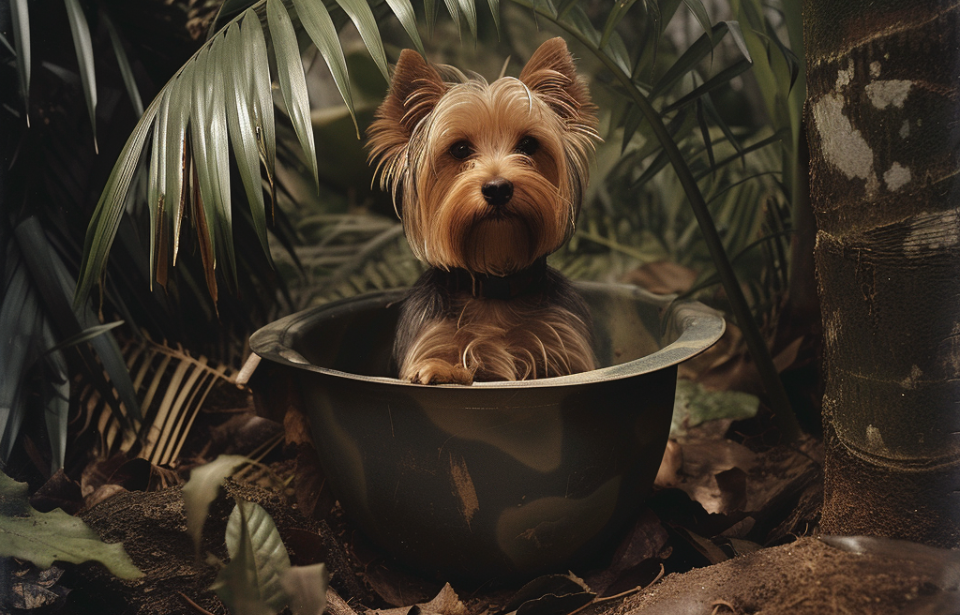Dogs have been important to warfare throughout history. While most people might picture a robust and reliable German Shepherd or another large breed, they probably wouldn’t think of a four-pound female Yorkshire Terrier! Smoky, however, proved that bravery isn’t determined by size, showing that even the tiniest of creatures can show tremendous courage with her service in the Pacific Theater during World War II.
Smoky ‘joins’ the US Army
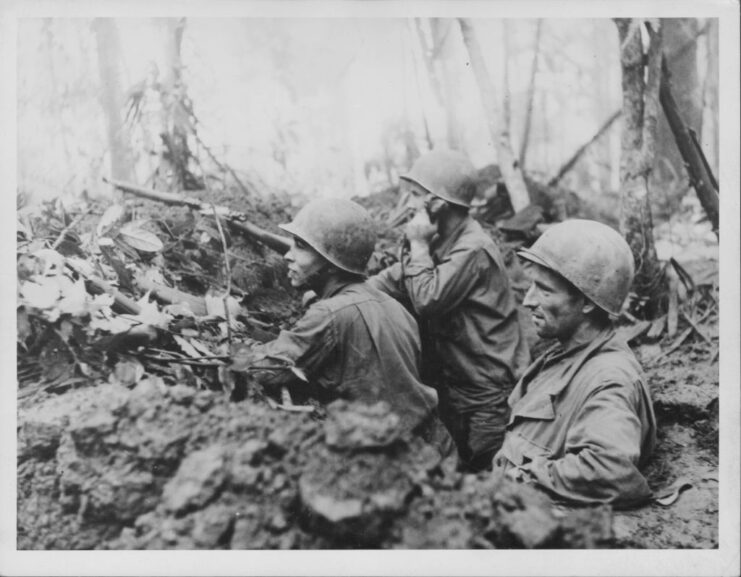
Smoky was found by American soldier Ed Downey in an abandoned foxhole on New Guinea in February 1944. Given the context of the fighting in the Pacific Theater, she was initially thought to have belonged to the Japanese, but this was proven false, as she didn’t understand any commands spoken to her in Japanese. She also couldn’t understand English, for that matter.
Smoky was subsequently purchased by Cpl. William “Bill” Wynne for $2 AUD, as Downey needed money to rejoin a poker game. Wynne, who’d worked with dogs before World War II, became very attached to the Yorkie, allowing her to sleep in his tent on a blanket made from a table cover and sharing his food with her. In this case, it was Spam.
Becoming more and more popular among the troops, Smoky learned new tricks to perform alongside the Special Services, over 200 hand signals and commands, and was even parachuted from a tree. In 1944, she was named the “Champion Mascot in the Southwest Pacific Area” by a wartime magazine because of her willingness to learn tricks for the enjoyment of wounded soldiers.
It’s for this reason that many refer to Smoky as the first-ever therapy dog. She visited military hospitals, beginning with the 233rd Station Hospital on New Guinea during the Biak Island invasion, and continued her work for 12 years, during and after WWII.
26th Photo Reconnaissance Squadron, Fifth Air Force
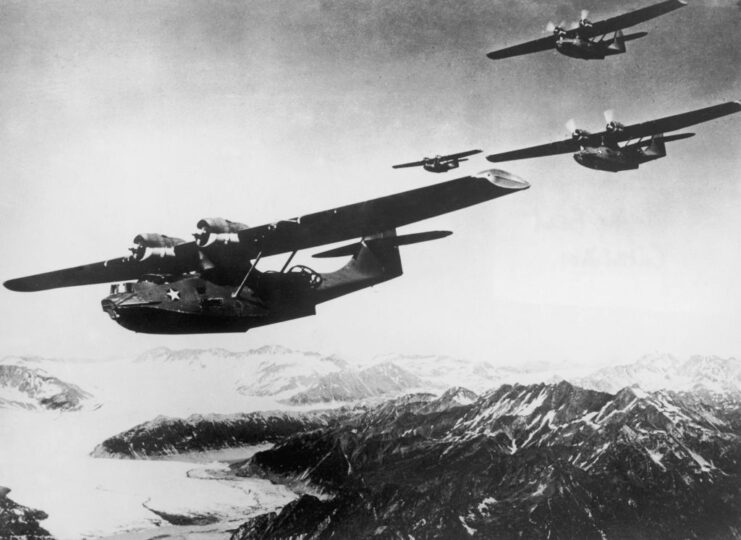
Smoky quickly became an indispensable member of the 26th Photo Reconnaissance Squadron, Fifth Air Force, taking part in 12 air/sea rescue and photo reconnaissance missions across the South Pacific. During these operations, she often raced around the fuselage of the Consolidated PBY Catalina, hanging beneath the waist gunner’s feet.
For her bravery in combat, Smoky earned eight battle stars. She withstood over 150 enemy air raids on New Guinea and even a typhoon that struck Okinawa’s coast. Bill Wynne credited her with saving his life on a transport ship. Smoky alerted him to incoming enemy shells, allowing him to duck just in time, though others around him were not so fortunate.
From that day forward, Wynne called his loyal canine companion the “‘angel’ from a foxhole.”
Smoky saved the lives of 250 American servicemen
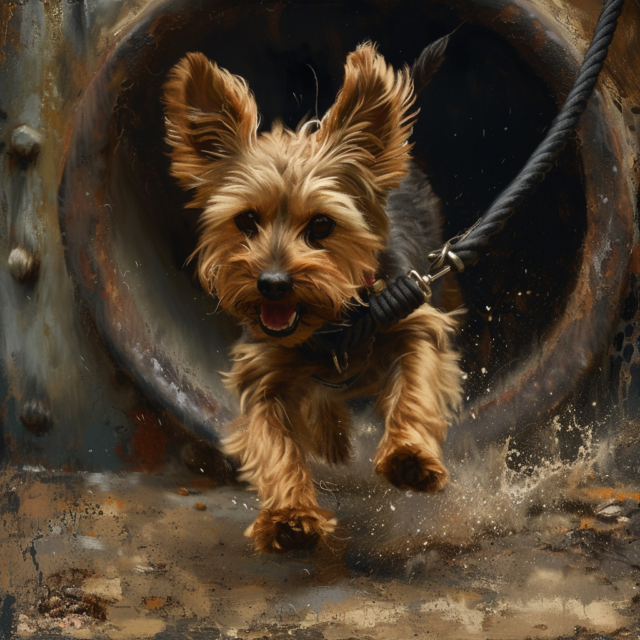
Smoky’s most significant accomplishment came in January 1945, when the 26th Photo Reconnaissance Squadron was deployed to Lingayen Gulf. While there, she ran a telegraph wire for the US Army Signal Corps through a 70-foot-long pipe that was just eight inches in diameter, while under heavy bombardment. She was just small enough to fit in it.
Bill Wynne himself described Smoky’s mission in an interview with NBC following the Second World War:
“I tied a string (tied to the wire) to Smoky’s collar and ran to the other end of the culvert… (Smoky) made a few steps in and then ran back. ‘Come, Smoky,’ I said sharply, and she started through again. When she was about 10 feet in, the string caught up and she looked over her shoulder as much as to say ‘what’s holding us up there?’ The string loosened from the snag and she came on again.
“By now the dust was rising from the shuffle of her paws as she crawled through the dirt and mold and I could no longer see her. I called and pleaded, not knowing for certain whether she was coming or not. At last, about 20 feet away, I saw two little amber eyes and heard a faint whimpering sound… at 15 feet away, she broke into a run. We were so happy at Smoky’s success that we patted and praised her for a full five minutes.”
Smoky’s act of courage resulted in 250 ground crewmen no longer having to risk their lives, for the work she’d done in a matter of minutes would have taken three days of digging up a taxiway under daily enemy assaults. Fixing the wire issues kept 40 American fighters and reconnaissance aircraft operational at a particularly crucial moment.
What did Smoky get up to after World War II?
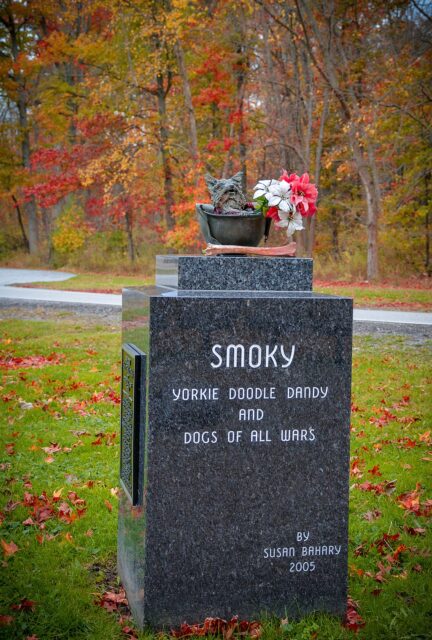
Following the conclusion of the Second World War, Smoky became a pioneer in dog therapy at veteran hospitals and had a career in Hollywood and television. She reportedly appeared on 42 shows, never once repeating a trick.
In February 1957, the battle-hardened Yorkie passed away. She was buried in a .30-caliber ammunition box. Nearly 50 years later, in November 2005, a monument was erected in her honor in Ohio’s Rockey River Reservation, depicting her sitting in a helmet. It was dedicated to “Smoky, the Yorkie Doodle Dandy, and the Dogs of All Wars.”
Over a decade after that, in March 2022, Smoky earned a new honor, becoming the first war dog to receive the Animals in War & Peace Distinguished Service Medal for her “exceptionally meritorious service to our nation in a duty of great responsibility.”
More from us: 5,000 War Dogs Served in Vietnam and Almost All of Them Were Left Behind
New! Want to become a trivia master? Sign up for our War History Fact of the Day newsletter!
Speaking at the ceremony, Robin Hutton, president of both Animals in War & Peace and Angels Without Wings, said:
“We don’t think of the animal sacrifice in war, but what they have done is truly stunning. The soldiers they serve with become their ‘pack,’ so they do these fierce feats because they want to please and out of love and devotion they have for their handler. They prove themselves time and time again.”
